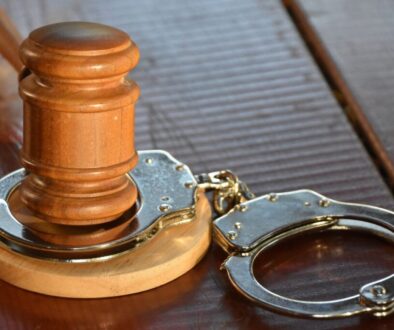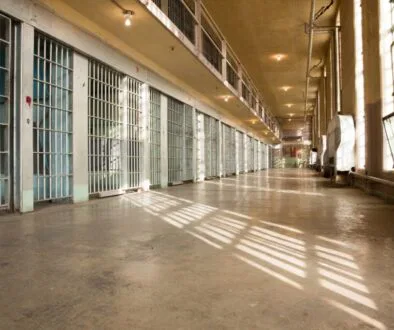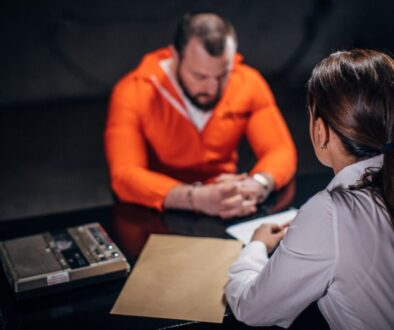A Quick Guide to Prisons in Indiana
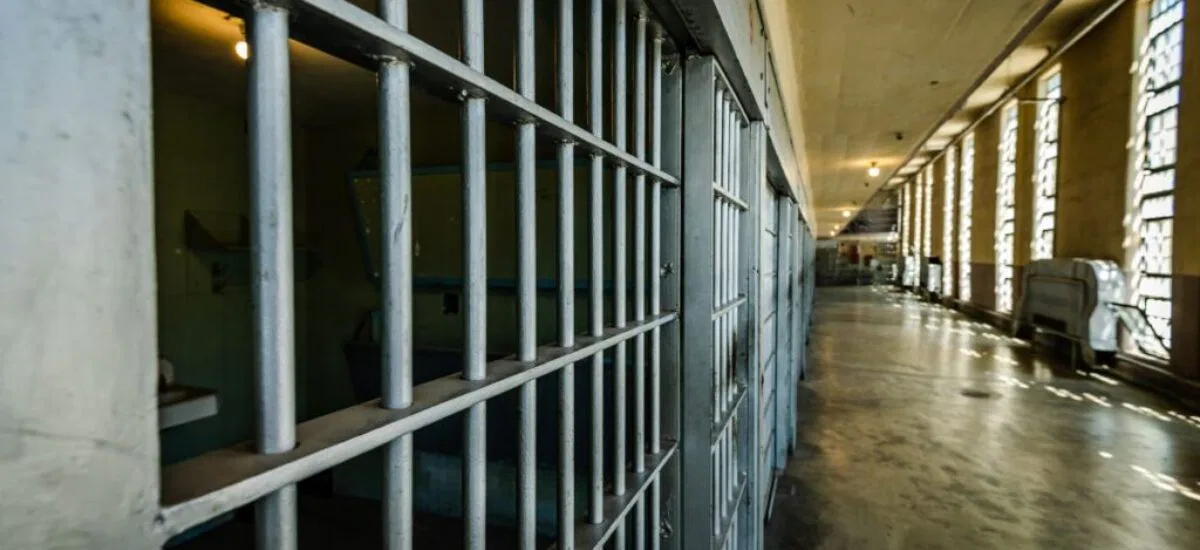
Published July 27, 2023
It can be devastating to find out that a friend or a relative is in prison after years of no contact.
When that happens, there’s nothing you can do but visit them. The problem is it can be a challenge to figure out where they’re located and which prison you must visit if you don’t have much information.
The good news is, depending on what you already know, you might be able to figure out their location if you know a thing or two about the prisons in Indiana. This article will discuss several things you need to know about prisons in Indiana. Let’s start by answering the question you’re probably asking right now.
How Many Prisons Are in Indiana?
There are currently 24 prisons in Indiana. Remember that this number only consists of actual prisons rather than jails. Similarly, this number only counts correctional facilities and not detention centers.
If you’re unaware, you’ll find individuals awaiting trial in jails and detention centers. Meanwhile, prisons and correctional facilities house individuals already serving their sentences.
However, if we were to include juvenile detention centers, the number would go up to 43 prisons in Indiana, as there are 19 juvenile detention centers in the state.
Different Types of Prisons in Indiana
Another common question regarding prisons in Indiana is how the prison system works or how it’s structured. Simply put, there are different types of prisons in the US. Let’s take a look at each one:
Federal Prisons
Federal prisons are where individuals who committed federal crimes like tax fraud, identity theft, and drug trafficking reside, hence the name. These prisons are under the responsibility of the Federal Bureau of Prisons (BOP). There are different types of federal prisons:
- United States jails (USP) prisons are the most restrictive type of facility handled by the BOP. They typically house inmates that are considered the most dangerous to society.
- Federal correctional institutions (FCI) are the second most restrictive type of facility. These institutions would often have strengthened security parameters, but at the same time, they would provide sufficient amenities to inmates as most FCIs have a high staff-to-inmate ratio.
- Private correctional institutions (PCI) are the same as FCI, except a private institution handles them. PCIs appear when the BOP cannot take the housing of all inmates.
- Federal prison camps are the least restrictive type of facility under the responsibility of the BOP. They have a limited perimeter, but it’s often no problem as most prison camps are adjacent to military camps. These prison camps are mainly built to offer work and education to inmates.
- Administrative facilities are a particular type of prison. These facilities are where inmates with unique circumstances reside. That includes offenders waiting for trial, inmates with severe medical conditions, and even inmates who tend to escape or are highly violent.
There are currently two federal prisons in Indiana, both of which are part of the Federal Correctional Complex (FCC) in Terre Haute. FCCs are essentially two or more federal prisons close to each other.
FCC Terre Haute consists of FCI Terre Haute and USP Terre Haute.
State Prisons
State prisons are under the state’s responsibility rather than an agency subdivision like BOP. These are where inmates who committed state crimes like assault, robbery, and arson reside.
State prisons only house adults, so people often refer to them as adult correctional facilities. Indiana currently has 19 state prisons and three women’s prisons in Indiana.
Juvenile Prisons
Juvenile prisons are, as the name implies, for juveniles or young offenders. These prisons house individuals too young to go to a state or federal prison.
There are two types of juvenile prisons: (1) detention centers and (2) correctional facilities.
As stated earlier, detention centers are where young offenders awaiting trial reside, while correctional facilities are where you’ll find juveniles already serving their sentence.
Juveniles in detention centers would often leave the facility after a month. On the other hand, Young offenders in correctional facilities may spend up to two years in the facility before they can go.
Indiana currently has three juvenile correctional facilities and 19 juvenile detention centers, including:
Security Levels in Indiana
Both state prisons and federal prisons have what they call a security level.
The security level would often correlate to the security measures in place in that facility and the danger to its inmates. The security level in prisons may range from:
- Maximum
- Medium
- Minimum
- Administrative
As one might expect, a maximum security level prison would have a ton of security measures and will only house offenders who are extremely dangerous or violent. And on the other side are minimum security level prisons where the security measures are limited, and inmates are not as violent.
Administrative is an exceptional security level, and as stated earlier, these types of prisons house inmates with unique circumstances.
List of Prisons in Indiana
To conclude, here’s a list of prisons in Indiana and their corresponding type and security level:
Federal Prisons
1. Federal Correctional Institution, Terre Haute
Indiana State Prison, located in Michigan City, Indiana, is a level four maximum security facility. The prison houses over 2,400 adult male offenders with long sentences and those convicted of violent crimes.
Address: 4200 Bureau Road, North Terre Haute, IN 47808
Contact Number: 812-238-1531
2. United States Penitentiary, Terre Haute
The United States Penitentiary, Terre Haute (USP Terre Haute), is a maximum-security federal prison in Terre Haute, Indiana. It serves as a correctional facility for male inmates. The prison is known for its high level of security and houses inmates who have committed serious offenses.
Address: 4700 Bureau Road South Terre Haute, IN 47802
Contact Number: 812-244-4400.
State Prisons
1. Branchville Correctional Facility | Medium Security
Branchville Correctional Facility is a medium-security state prison located in Branchville, Indiana. It opened in 1982 and can house over 1,400 incarcerated individuals. The facility primarily houses adult male inmates.
Address: 21390 Old State Rd 37, Branchville, IN 47514
Contact Number: +1 812-843-5921
2. Chain O’Lakes Correctional Facility | Minimum Security
The Chain O’Lakes Correctional Facility is a minimum-security prison in Albion, Indiana. It can house around 146 inmates. The facility is part of the Indiana Department of Corrections and is inside the Chain O’Lakes State Park in Noble County.
Address: 3516 E 75 South Albion, IN 46701
Contact Number: (260) 636-3114
3. Correctional Industrial Facility | Medium Security
The Correctional Industrial Facility (CIF) is a medium-security prison in Pendleton, Indiana. It was opened in 1985 and can house over 1,400 adult male inmates. CIF provides a structured environment for rehabilitation and offers educational programming to incarcerated individuals.
Address: 5124 W. Reformatory Road, Pendleton, IN 46064
Contact Number: (765) 778-8011
4. Edinburgh Correctional Facility | Minimum Security
The Edinburgh Correctional Facility is a minimum-security prison located in Edinburgh, Indiana. It houses more than 300 incarcerated individuals and has a Level 1 security classification. Inmates at this facility can work outside the fence during the day to rehabilitate and reintegrate into society.
Mailing Address: P.O. Box 470 Edinburgh, In. 46124
Contact Number: (812) 526-8434
5. Heritage Trail Correctional Facility | Minimum Security
The Heritage Trail Correctional Facility is a minimum-security prison in Plainfield, Indiana. It is a privately operated facility for male inmates, with a capacity of approximately 1,000. The facility provides dormitory-style housing and focuses on inmates’ transition out of the system.
Address: 501 W. Main Street, Plainfield, Indiana 46168
Contact Number: (317) 839-7751
6. Indiana State Prison | Maximum Security
It houses adult males serving long sentences or being convicted of violent crimes. The prison has a level four security designation, indicating its high-security measures. With a capacity of approximately 2,300 inmates, the Indiana State Prison is one of the most extensive correctional facilities in the state.
Address: 1 Park Row, Michigan City, IN 46360
Contact Number: (219) 874-7258
7. Indiana Women’s Prison | Maximum Security
The Indiana Women’s Prison is a maximum-security facility in Indianapolis, Indiana. It is the oldest and first women’s prison in the state. The jail can hold up to 2,300 inmates and houses Indiana’s only death row for women, although there are currently no inmates.
Address: 2596 Girls School Road Indianapolis, IN 46214
Contact Number: (317) 244-3387
8. Indianapolis Re-entry Educational Facility | Minimum Security
The Re-entry Educational Facility is a minimum-security prison located in Indianapolis, Indiana. It is dedicated to preparing inmates for their successful reintegration into society. The facility focuses on providing education and re-entry programs to help offenders acquire the necessary skills and resources for a positive transition back into the community.
Address: 401 N Randolph St, Indianapolis, IN 46201, United States
Contact Number: +1 317-639-2671
9. Madison Correctional Facility | Women | Minimum Security
With a capacity to hold more than 900 women, the Madison Correctional Facility offers various programs and services for education, vocational training, and personal development. These programs aim to equip inmates with the necessary skills and resources to lead productive lives upon release.
Address: 800 MSH Bus Stop Drive, Madison, IN 47250
Contact Number: (812) 265-6154
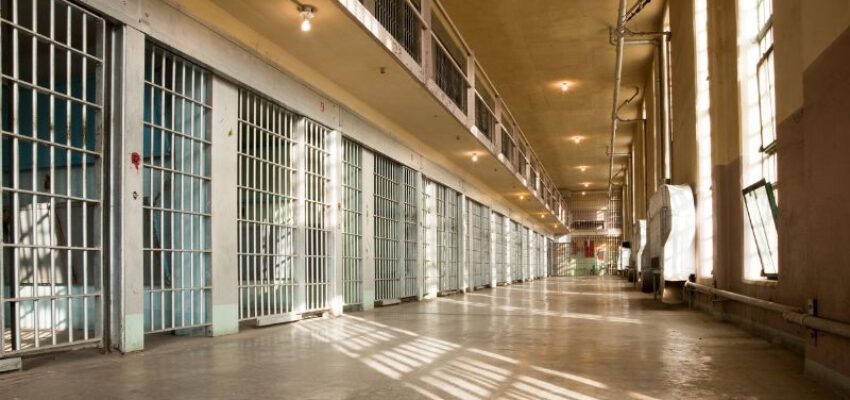
10. Miami Correctional Facility | Maximum Security
The Correctional Facility is a maximum-security prison located in Bunker Hill, Indiana. The Indiana Department of Correction operates it and houses male inmates who have committed serious crimes. The facility can hold over 3,100 men in dormitories and cell houses.
Address: 3038 West 850 South, Bunker Hill, IN 46914-9810
Contact Number: (765) 689-8920
11. New Castle Correctional Facility | Medium Security
The New Castle Correctional Facility is a medium-security prison in New Castle, Indiana. It primarily houses adult male inmates with security levels ranging from 1 to 4, including special needs and maximum security offenders. The facility has a maximum capacity of approximately 3,200 inmates. Visiting hours are established for friends and family members to maintain contact with inmates at the New Castle Correctional Facility.
Mailing Address: 1000 Van Nuys Road, P.O. Box E, New Castle, IN 47362
Contact Number: (765) 593-0111
12. Pendleton Correctional Facility | Maximum Security
The Pendleton Correctional Facility is a level three maximum security adult male facility in Pendleton, Indiana. The Indiana Department of Correction operates it and can house approximately 1,800 adult males. The facility provides both full and minimum-security housing for inmates over the age of 22.
Address: 4490 W. Reformatory Rd., Pendleton, IN 46064-9001
Contact Number: (765) 778-2107
13. Plainfield Correctional Facility | Medium Security
As a medium-security prison, the Plainfield Correctional Facility maintains moderate security measures. It aims to ensure inmates’ and staff members’ safety and well-being. The facility houses individuals without significant security threats but requires a controlled environment. They also offer various programs and services to support rehabilitation and reintegration into society.
Address: 727 Moon Road, Plainfield, IN 46168
Contact Number: (317) 839-2513
14. Putnamville Correctional Facility | Medium Security
Initially established in 1914 as the Indiana State Farm, and later reclassified to medium security in 1977. The facility houses male inmates convicted of felonies. The facility maintains moderate security measures with a capacity of about 2,400 inmates. It provides programs and services to address the educational, vocational, and rehabilitative needs of the inmates.
Address: 1946 West U.S. Hwy 40 | Greencastle, IN 46135
Contact Number: (765) 653-8441
15. Reception Diagnostic Center | Administrative Security
The Reception Diagnostic Center (RDC) is a maximum-security intake facility for adult males sentenced to the Indiana Department of Correction. Its primary function is to orient, evaluate, and classify each inmate before they are assigned to a correctional facility. The RDC conducts interviews, reports, and diagnostic tests to assess the needs and risks of the inmates. This evaluation helps determine their facility and program assignments.
Address: 737 Moon Road Plainfield, IN 46168
Contact Number: (317) 839-7727
16. Rockville Correctional Facility | Women | Maximum Security
The Rockville Correctional Facility is a maximum-security prison located near Rockville, Indiana. It is specifically designed to house adult females who have been convicted of serious crimes. The facility spans approximately 52 acres and can accommodate around 1,200 women.
Address: 811 W. 50 N., Rockville, IN 47872
Contact Number: (765) 569-3178
17. South Bend Community Re-entry Center | Minimum Security
The South Bend Community Re-entry Center is a minimum-security facility in South Bend, Indiana. It was established in 1975 and can accommodate around 112 inmates. This center focuses on providing re-entry services to incarcerated individuals who are being released in northern Indiana.
Address: 4650 Old Cleveland Road, South Bend, IN, 46628
Contact Number: (574) 234-4094
18. Wabash Valley Correctional Facility | Maximum – Minimum Security
The Wabash Valley Correctional Facility is a state prison in Carlisle, Indiana. It houses male inmates of all security levels, from minimum to maximum. The facility has operated since 1984 and sits on a 37-acre site. It can accommodate around 2,091 inmates.
Address: PO Box 500 | 6908 S. Old US Hwy 41, Carlisle, IN 47838
Contact Number: 812-398-5050, extension 4500.
19. Westville Correctional Facility | Medium Security
The Westville Correctional Facility is a medium-security prison located in Westville, Indiana. It is primarily for male inmates and currently houses around 3,200 individuals. The facility consists of different sections with three levels of security. At Westville, inmates have access to various programs and services aimed at rehabilitation and personal growth.
Address: 5501 South 1100 West Westville, IN 46391-0473
Contact Number: (219) 785-2511
Juvenile Correctional Facilities
1. LaPorte Juvenile Correctional Facility | Women | Maximum Security
The LaPorte Juvenile Correctional Facility is the only female juvenile facility in Indiana. It is a maximum-security facility that can house up to 62 female youth. The facility is located in LaPorte and sits on a 60-acre property. It serves as an intake facility for female youth offenders in the state.
Address: 2407 N 500 W, La Porte, IN 46350
Contact Number: (219) 326-1188
2. Logansport Juvenile Correctional Facility Medium – Maximum Security
The Logansport Juvenile Correctional Facility in Logansport, Indiana, serves as an intake unit for male juveniles between 12 and 18. It is a medium to high-risk prison with adequate security measures in place. The facility has different levels of security, including minimum, medium, and maximum.
Address: 1118 South State Road 25, Logansport, IN 46947
Contact Number: (574) 753-7571
3. Pendleton Juvenile Correctional Facility | Maximum Security
The Pendleton Juvenile Correctional Facility is a maximum-security prison in Pendleton, Indiana. It is specifically designed to house juvenile males between the ages of 12 and 21 who have been convicted of serious offenses. The facility has a capacity of 391 beds and covers an area of 91 acres.
Address: 9310 South State Road 67 Pendleton, IN 46064
Contact Number: (765) 778-3778
Advertisement
Save 90% Per Minute On Jail Calls With Us
US prisons charge lots of money per minute for long distance inmate calls. The loved ones of inmates are left to pay this bill. For a ten minute phone call you may find yourself paying over one hundred dollars. With SecurTel, you can reduce this charge to a fraction of the cost and only pay the local calling rate. Make calls from across the US or internationally for the local rate and help your family stay connected during a difficult time. Learn more about how to sign up for inmate calls here.
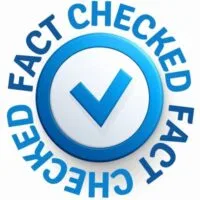
This Content Is Fact Checked
We have conducted thorough fact-checking on this content in-house. Get detailed insights into our website’s editorial standards by clicking here.

About The Author
Meet Rei Bayucca, an accomplished writer with a passion for exploring a wide range of industries. Through her skilled and thoughtful writing, Rei aims to inspire and educate readers with content that stimulates the mind.

